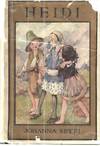
The Voyage of the Beagle
by Charles Darwin
- Used
- Acceptable
- Hardcover
- Condition
- Acceptable
- Seller
-
Goring-by-Sea, West Sussex, United Kingdom
Payment Methods Accepted
About This Item
Synopsis
Charles Darwin, at age 22, had by 1831 rejected careers in both medicine and the clergy when he was offered the position of naturalist aboard the HMS Beagle, a 90-foot sloop charged with charting South American waters. He was not the first choice for the job. His father stood in his way. Even the ship's captain was uncertain about him. Yet he made it onto the Beagle, and this five year voyage, he later wrote, was the most important event of his life and shaped his entire career. This was a return trip to South America for the Beagle and Darwin left the placid landscape of England to journey to a land of dynamic terrain: high mountains, earthquakes, volcanoes, strange coastlines and even stranger animals and fossils. Darwin spent thousands of hours making observations, collecting specimens, and recording data. He went ashore all along the South American coasts, often riding horseback into the interior in order to collect more data, and he also includes his observations about the people whom he met there, from army generals to local Indians. And of course, he visited the now famous Galapagos Archipelago, the 10 islands formed by volcanic action where Darwin noticed that several species of finches existed, with beak shapes that were vastly different. He thought deeply about the comment made by the vice-governor that there were many different varieties of tortoises to be found on the island, and came to the conclusions about evolution he later elaborated upon in his Origin of Species: "It was most striking to be surrounded by new birds, new reptiles, new shells, new insects, new plants, and yet by innumerable trifling details of structure, and even by the tones of voice and plumage of the birds, to have the temperate plains of Patagonia, or rather the hot dry deserts of Northern Chile, vividly brought before my eyes. Why, on these small points of land, which within a late geological period must have been covered by the ocean, which are formed by basaltic lava, and therefore differ in geological character from the American continent, and which are placed under a peculiar climate, -- why were their aboriginal inhabitants, associated, I may add, in different proportions both in kind and number from those on the continent, and therefore acting on each other in a different manner -- why were they created on American types of organization?" The Beagle went back to England via Australia and New Zealand, and Darwin continued to collect specimens there as well. He left England as student with a keen and open mind; he returned an experienced scientist with definite ideas about the workings of nature, and raw data to substantiate his theories. He would go on of course to refine them and publish On the Origin of Species by means of Natural Selection, that famous and still controversial book. The direction of Darwin's thought is clearly evident in The Voyage of the HMS Beagle, as well as his exuberance. This is the second edition of the book, originally published in 1845. Fascinating reading from a truly original mind!
Reviews
(Log in or Create an Account first!)
Details
- Seller
- World of Rare Books
(GB)
- Seller's Inventory #
- 1678976420IEV
- Title
- The Voyage of the Beagle
- Author
- Charles Darwin
- Format/Binding
- Hardcover
- Book Condition
- Used - Acceptable
- Quantity Available
- 1
- Publisher
- J.M. Dent & Company
- Date Published
- 1945
Terms of Sale
World of Rare Books
30 day return guarantee, with full refund including shipping costs for up to 30 days after delivery if an item arrives misdescribed or damaged.
About the Seller
World of Rare Books
About World of Rare Books
Glossary
Some terminology that may be used in this description includes:
- Edges
- The collective of the top, fore and bottom edges of the text block of the book, being that part of the edges of the pages of a...
- Jacket
- Sometimes used as another term for dust jacket, a protective and often decorative wrapper, usually made of paper which wraps...
- Cloth
- "Cloth-bound" generally refers to a hardcover book with cloth covering the outside of the book covers. The cloth is stretched...
- Cracked
- In reference to a hinge or a book's binding, means that the glue which holds the opposing leaves has allowed them to separate,...
- Gilt
- The decorative application of gold or gold coloring to a portion of a book on the spine, edges of the text block, or an inlay in...
- Acceptable
- A non-traditional book condition description that generally refers to a book in readable condition, although no standard exists...
- Spine
- The outer portion of a book which covers the actual binding. The spine usually faces outward when a book is placed on a shelf....
- Text Block
- Most simply the inside pages of a book. More precisely, the block of paper formed by the cut and stacked pages of a book....


